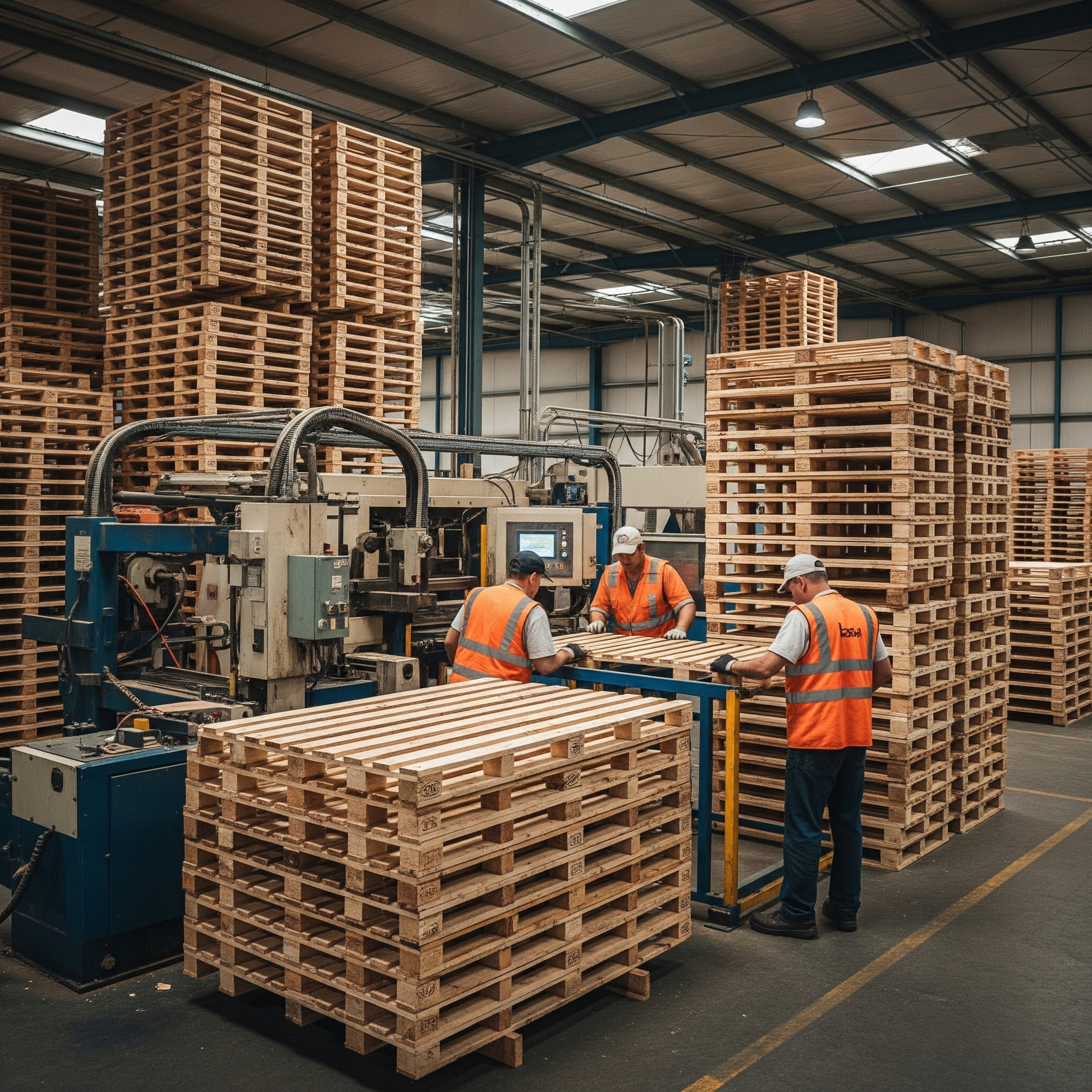
As sustainability increasingly gains importance amongst consumers and producers and becomes a cornerstone of industrial logistics, the pallet industry follows suit. Once considered a low-tech cog in the global supply chain, the humble pallet, which is responsible for carrying 95% of all industrial and consumer goods at some point in their journey, is now at the center of a dramatic change. With generative AI and data-driven platforms pushing the industry forward, the shift from disposable wooden pallets to smarter, more traceable, and circular alternatives is reshaping global supply chain logistics.
Globally, the pallet industry is estimated to be worth over $80 billion, supporting the movement of trillions of dollars in goods across every sector—agriculture, pharmaceuticals, food and beverage, retail, and more. In the U.S. alone, over 2 billion pallets are in circulation annually, and around 500 million new pallets are produced every year.
Most pallets, around 90–95%, have traditionally been made of wood. While wooden pallets are inexpensive and easy to produce, they are also prone to damage, short-lived, and contribute to significant deforestation and landfill waste. Roughly 25% of wooden pallets are not reused, contributing to over 150 million discarded pallets annually in the U.S. alone.
This linear model is standard but extremely wasteful. Produce, use, discard—this system is ripe for disruption and that’s where AI and circular economy principles are stepping in.
Smart pallets made from durable, recyclable plastics are embedded with IoT sensors and QR codes that allow for real-time tracking, load optimization, and inventory traceability. These pallets are more expensive up front, costing anywhere from $30 to $80 compared to $11 to $15 for wooden ones, but their reusability and lower maintenance costs make them more economical over time.
Generative AI comes into play by enabling dynamic simulations of supply chain conditions:
According to market researchers, AI-powered logistics optimization could generate up to $130 billion in annual savings globally by 2030, with pallets acting as a foundational element of that system.
At the intersection of AI and sustainable food supply chains, JourneyFoods is using its data intelligence platform to support smarter packaging, logistics, and ingredient sourcing. The company is now looking toward the broader logistics infrastructure that supports sustainable food delivery—starting with how food is transported at scale.
JourneyFoods’ AI models can:
For example, a JourneyFoods study found that switching 10,000 wooden pallets to recyclable plastic ones across a major CPG client’s supply chain reduced CO2 emissions by over 1,500 metric tons per year—roughly equivalent to removing 325 cars from the road.
Circular economy principles are increasingly influencing supply chain decisions. Instead of designing pallets for single-use, manufacturers and distributors are seeking ways to reuse, recycle, and repurpose them. Companies like CHEP and iGPS are already investing in closed-loop pallet pooling systems, where pallets are cleaned, repaired, and redistributed.
These shifts are driven by:
Smart pallets, by enabling data-rich visibility across the lifecycle of a product, empower companies to make granular improvements to reduce waste and cost.
The biggest barriers to widespread smart pallet adoption include:
However, as AI platforms like JourneyFoods provide the interoperability and analytics needed to manage these systems, the path toward a smarter, more circular pallet economy becomes clearer.
The pallet may seem like a minor element in the global economy, but when 95% of goods depend on it, its impact is massive. Transitioning to smart, recyclable pallets and optimizing their use with AI represents a profound shift in both environmental and economic terms.
Companies like JourneyFoods are proving that innovation isn’t just about new products, but about transforming the very infrastructure of how goods—including food—get from origin to destination. In a time when climate goals, consumer expectations, and cost pressures are converging, smart pallets represent a rare triple win: economic efficiency, sustainability, and tech-driven traceability.
The future of supply chains isn’t just about speed or scale—it’s about intelligence. And sometimes, that future is built one pallet at a time.
